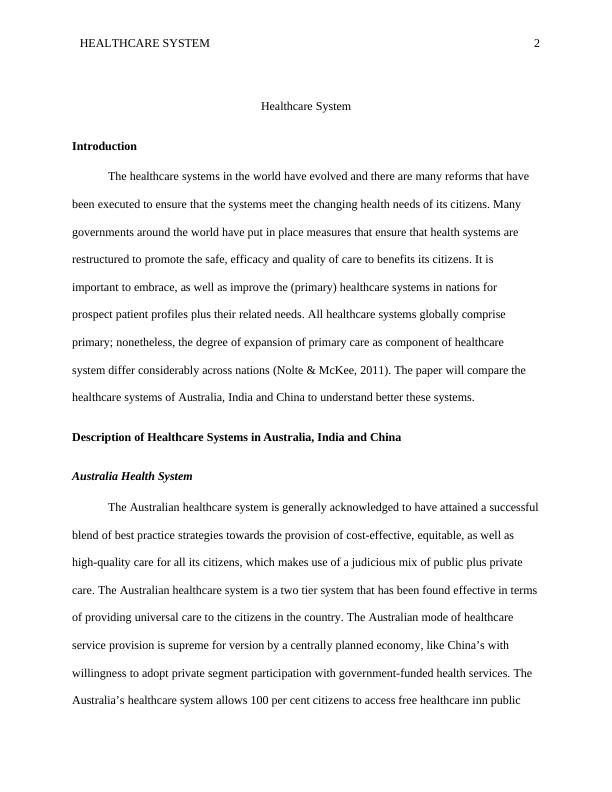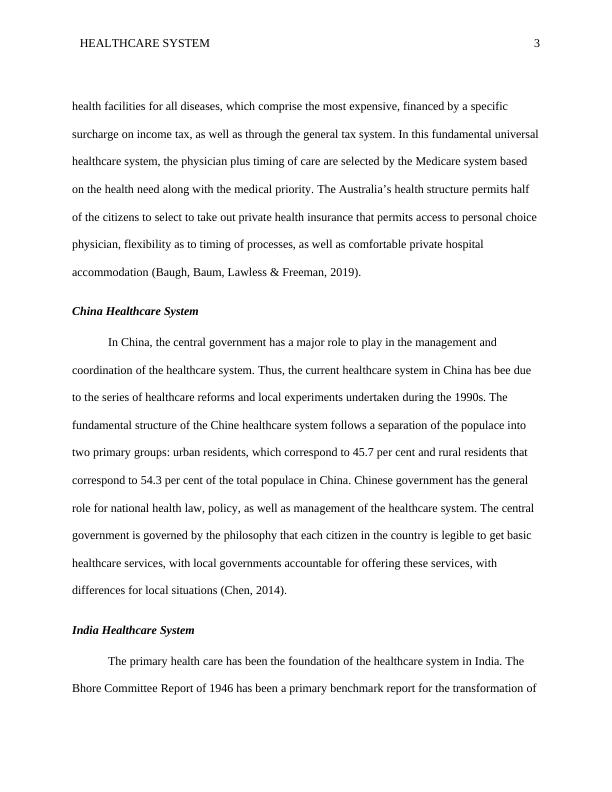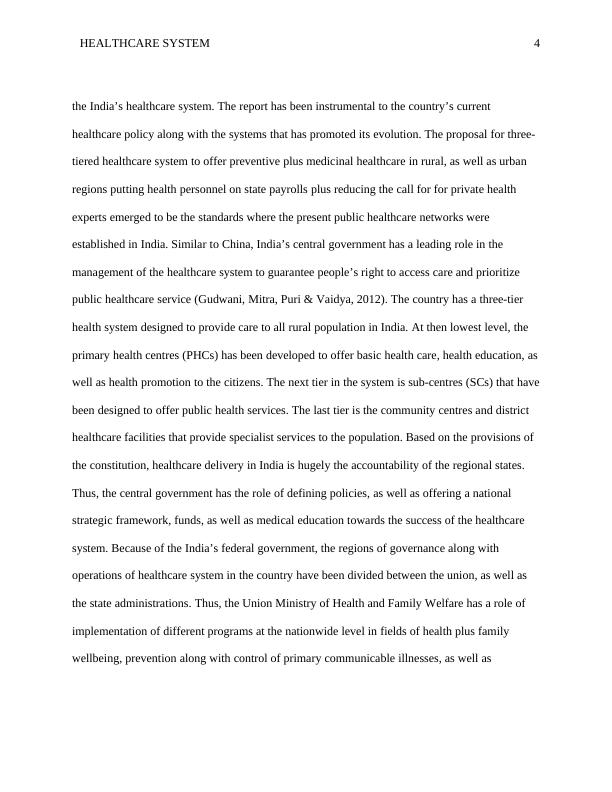Comparison of Healthcare Systems in Australia, India and China
The assignment requires a comparison and contrast of health systems in three different countries, analyzing their governance, structure, function, and performance in achieving health outcomes. It also requires a critical evaluation of proposed or ongoing reforms in each system. The report should be written in publication standard and adhere to APA referencing style.
Added on 2022-11-13
About This Document
Comparison of Healthcare Systems in Australia, India and China
The assignment requires a comparison and contrast of health systems in three different countries, analyzing their governance, structure, function, and performance in achieving health outcomes. It also requires a critical evaluation of proposed or ongoing reforms in each system. The report should be written in publication standard and adhere to APA referencing style.
Added on 2022-11-13
End of preview
Want to access all the pages? Upload your documents or become a member.




